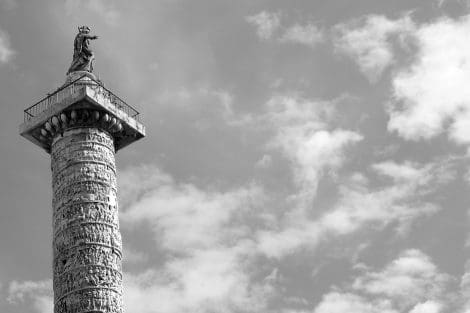Our collection of Finest luxury villa rentals in Catania
Luxury villa rental » Italy » Sicily » Catania
Welcome to Sicily, home of wine, culture and architecture. A land where the sky is always blue. We take you to Catania, between the Ionian Sea and fascinating volcano. Our charming villas are easy to reach, with Catania's international airport just ten minutes away. Sicily's east coast offers a wide range of vacation possibilities.
Best villas for rent IN Catania


Best rated property
Indoor swimming pool, SPA, Mountains viewRates from 20 600 € to 30 300 € / week
Sicily – Catania
24 guests – 12 bedrooms
villa siccat 4302
Whether you are looking for waves and beaches or olive groves and plains, Sicily is the place for you. Surrounded by the wildest nature, our villas overlook the surrounding hills and offer an intimate setting for relaxation. Just a few hundred meters’ walk will take you to the bustle of small country villages. Numerous restaurants cater to Italian specialties, such as burrata and almond pastries. Our inland villas are less than an hour from Catania, so it is possible to organize a day trip to the city.
For families and friends who prefer more visible luxury on the outskirts of Catania, Bellavista also offers a wide choice of properties. Our contemporary coastal residences have been designed to enhance the captivating beauty of the landscape. Whether by the pool or on a small terrace, the view of the infinite blue sea will be just as you imagined it in your wildest dreams.
As for activities, there is something for every type of traveller. Hiking enthusiasts will find a thousand and one ways to tackle Etna. Whether from the south, near Catania, or from the east, at Taormina, the view at the end of the journey is a reward worth every effort. As for the city dwellers of baroque, volcanoes and history.
Catania’s history begins, of course, with the Greeks, who colonized much of the Mediterranean.The colony of Catania at the foot of Mount Etna was founded four years after the colony of Syracuse. Sicilian volcanoes were the subject of many fantasies, enhanced by the fear of instant chaos. One of the symbols of Catania is an elephant with an obelisk on its back, protecting Catania and the valley. Known as U Liotu, this sculpture in the town’s historic center is a Heliodorus. In mythology, the Heliodorus is a creature endowed with powers related to magic. A small detail makes this animal unique: it is made of lava stone! Unfortunately, the valiant elephant was unable to protect the city during the eruptions of the 19th century.
As far as architecture is concerned, the Baroque style prevails in Sicily. As you digress, you’ll find plenty of opportunities to marvel at the well-preserved period buildings. Churches abound in this Unesco World Heritage city. Sainte Agathe Cathedral, designed by a Breton abbot by the name of Angser, was built for military as well as religious purposes. The Muslims had invaded much of the Iberian Peninsula and the Mediterranean islands. The Normans, afraid of wars in Catalonia and Gard, decided to come to Sicily to Christianize the island. The ultimate aim was to catch the Muslim armies in a vice and make them surrender. This Baroque church played a major role in all the wars of religion, as it served as the Sicilian knights’ main point of departure after receiving their final instructions and prayers.
Also in the town center of the ancient Greco-Roman city is Castello Ursino. Castello Ursino is a 13th-century military building with a reputation for inviolability. It was originally built to protect the eastern part of Sicily from Byzantine invasions and the eruptions of Mount Etna. Originally facing the sea, the castle is now one kilometer inland due to the volcano’s numerous eruptions. At one time, the castle’s inner courtyard was filled with burning lava following Etna’s reawakening. We deduce that its protective function was not always fulfilled to perfection. Today, the castle houses the city’s largest museum and art gallery.
There’s a lot to do in Catania, and still in the city center, take a look at the Palace of the Clerks’ Seminary. This church-owned palace has passed through many hands. The earthquake of 1693 destroyed three quarters of it. King Charles V rebuilt it with fortifications to prevent it being destroyed by the vagaries of the earth. A few streets away is the Monastery of Saint Nicholas. The complex comprises a Benedictine monastery and a gigantic 18th-century church. Its surface area of over one hundred thousand square meters makes it the second largest monastery in Europe after Mafra in Portugal. If you head for the shore, you’ll surely spot the Teatro Massimo Bellini di Catania, Sicily’s leading opera house. The tenor Bernamino Gigli declared it to be the best hall in the world in terms of acoustics.
How can you visit Catania without delving into a series of little legends about Mount Etna? The etymology of the word Etna is very interesting. It comes from the Greek aïtho (αἴθω), I burn. With the volcano having shown its whims on numerous occasions, Sicilian lands often had the look of bad days. Note that for the Hellenes, the black faces of Africa were described as burnt. The very name of the country Ethiopia comes from the word aitho-pia, the land of burnt heads. In Greek mythology, Etna owes its appearance to gigantomachy. These were violent battles between the Giants, sons of the gods, and the Titans, demigods or enemies. Enceladus, son of Ouranos (the sky), was punished by the Olympian gods for deserting the battlefield in the face of a Titan. The punishment was swift: he was crushed by the entire island of Sicily. The volcano represents his tormented soul. Another legend has it that Cyclops builds the weapons of the gods. Poseidon’s trident and Zeus’ lightning bolt are said to have been forged beneath this volcano. Lava flows represent the working of materials.
Back on terra firma, you can rent a car and visit the town of Taormina, less than an hour from Catania. Ideal for a day trip, the city of a hundred hills will allow you to increase your panorama collection. Look for the ultimate in photography, an image where Etna, the city’s rooftops and the turquoise blue of the Ionian Sea come together for a memorable souvenir. An ideal location for a breathtaking view is Castelmola, slightly to the north of the city.
Exactly one hour south of Catania lies another Greek city mentioned in our introduction, Syracuse. A perfect destination for a day of discovery. We’d like to suggest an astonishing place, the Ears of Denys. It’s a cave 25 metres high and around ten metres wide. Carved out of limestone, this cave was originally a prison for opponents of the Greek city’s dictator, Denys. The term Oreille (ear) refers to the fact that the tyrant’s men heard and knew everything that was going on in the region. You can continue your discovery of this city on foot, taking a leisurely stroll down the hills past the Greek theater and the great ancient Neapolis. The city center is a small island visible from the Greek hills. What could be more bucolic than strolling through the narrow Sicilian streets with a gelatto in hand? The Italian ambiance of Dolce Vita can be felt in every corner of this island, right down to our luxurious residences, in harmony with the idyllic Italy‘s landscape.
Experiences to live around the villas IN Catania


Discover Mount Etna with Bellavista
















